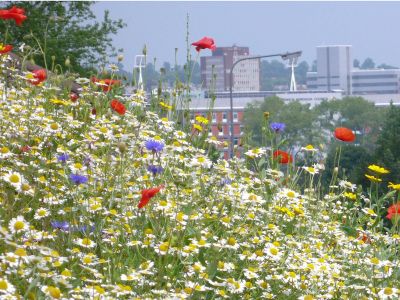Though not as popular, the creation of urban meadowlands has also gained traction among homeowners and city councils. Read on for tips on growing urban meadows.
What is an Urban Meadow?
Urban meadowscaping can vary greatly. In general, a meadow in the city is done in large areas which have traditionally been kept as turf. Common areas to find these meadowlands include between highways and around parking lots. To begin the conversion of the space to meadow, various types of native grasses and wildflowers are used. These native species are attractive to pollinators and support a more natural and easy-to-care for ecosystem. Although the creation of a meadow in the city is most effective over large areas, home gardeners who wish to grow an urban meadow also have several options.
Grow an Urban Meadow
Urban meadowscaping can be accomplished in different ways, from small to large. Small scale plantings are most applicable for city dwellers. This can be done within singular flower beds or throughout entire lawns. Those wishing to grow an urban meadow will first need to select the planting site. Planting locations should drain well and receive full sun for most of the day. Next, you’ll need to choose plants. Before planting anything, consider the garden’s soil type. While some grasses and flowers require consistent fertilization, others may grow better in places where soil is less than ideal. Many popular plants for urban meadowscaping are annuals, but also include several perennial types. Diversifying the meadow planting will help to promote the overall health of the space, as well as provide seasonal interest. Adding plants of differing heights, textures, and bloom season will help extend the appeal of the planting space. In urban meadow gardening, many growers choose to forgo regular maintenance tasks such as irrigation and fertilization. Rather than deadheading spent blooms, allow the plants to form seeds. This will attract birds and other small animals. These are just some examples of how low maintenance techniques can assist in a more natural establishment of the small meadow ecosystem.
